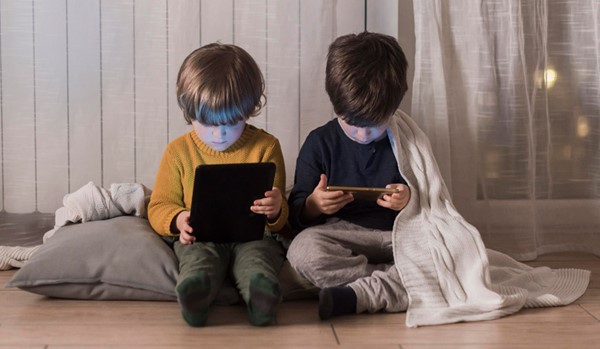By: Nicole Leuci Gilmer
Libraries are not just havens for bookworms; they are vibrant community hubs where diversity and inclusion can flourish through the universal language of play. By offering dedicated play areas and dynamic materials, libraries can create a mosaic of play that reflects the diversity of their community.
Chapter One: A Place for Everyone
Diversity and inclusion are not just buzzwords; they’re the core of a strong community. Libraries can bind together diverse groups, creating shared experiences through play.
When libraries offer dedicated play areas, they send an open invitation to families and children from all walks of life. It’s a narrative that reads, ‘All are welcome.’ These spaces create opportunities for visitors to mingle and engage in a relaxed and welcoming environment that can ultimately lead to community building. For example, moms meeting while their toddlers enjoy the pretend play area in the children’s section of the library.
Additionally, by engaging community members in playful activities and conversations, libraries can organically solicit valuable insights and ideas for future planning and decision-making.
Chapter Two: Crafting the Story Through Play
The concept of loose-parts play is simple: provide a variety of materials that children can move, combine, and redesign. Libraries can promote cultural exchange and celebration by providing an array of materials that cater to various backgrounds, abilities, and interests.
By incorporating materials and activities that reflect diverse cultural traditions and experiences, libraries can create opportunities for cross-cultural learning and understanding. From using blocks to assist in telling a story of faraway lands, to scrap papers being crafted into cultural holiday decorations, the potential for inclusion and collaboration is as limitless as a child’s imagination.
Chapter Three: The Plot Thickens… Add On to Storytime
Encourage children to actively participate in the storytelling process by inviting them to join in with sound effects, gestures, or repetitive phrases. Use props (like our Blocks), puppets, or costumes to bring the story to life and spark their imagination.
Integrate movement-based activities into storytime to keep children engaged and active. This could involve dancing, acting out scenes from the story, or playing simple games that relate to the theme or characters.
Storytimes can include books in different languages, and summer reading activity days can feature adaptive technology for children with different abilities. This array of thoughtful programming ensures that every child sees themselves reflected in the library’s offerings, sending a powerful message: ‘You belong here.’
Chapter Four: Unique Learning Experiences
Libraries serve as local hubs that foster diversity and inclusion, with partnerships and events that mirror the community’s culture. Partnering with local cultural centers, such as Native American community centers or immigrant resource centers, libraries can offer interactive storytelling circles and multicultural fairs, inviting exploration of global traditions and games.
By inviting guest speakers and artists from a spectrum of diverse backgrounds, libraries become stages for unique learning experiences. These events are not only educational but also serve as a celebration of the rich cultural fabric that weaves together local communities.
Examples:
- Drum-making workshops led by skilled artisans from African or Indigenous cultures that delve into the rhythmic traditions of that region.
- Promote multicultural literature by hosting bilingual book readings by authors from various linguistic backgrounds.
- Bridge cultural gaps through creative events that promote play. Have patrons use loose parts to construct representations of international landmarks, symbols, or geography.
Libraries can use loose parts play as a draw for community outreach events, such as pop-up play sessions at local parks, festivals, or community gatherings. These events provide opportunities for libraries to connect with community members outside of traditional library settings and promote their services and resources.
Loose-parts play is a canvas for inclusion – the unsung hero of imaginative learning – and libraries have an abundance of ways to utilize this to their advantage.
Happily Ever After – The Enduring Impact
Dedicated play areas aren’t just a fleeting subplot that serve as an afternoon outing; they’re key characters in the story of a child’s development. These spaces, and the play that happens within them, supports social skills, encourages diversity, and fosters a sense of belonging.
Librarians, as the authors of this narrative, have the opportunity to craft chapters that will be remembered for generations. Through play, they can support not just literacy, but a legacy of inclusivity, curiosity, and joy. The enduring impact of these play areas is a testament to the library’s role as a cornerstone of community life where every individual, regardless of age or background, can write their own story of discovery and delight.
Want to learn more about Imagination Playground’s USA-made, Blue Blocks and why they are perfect for libraries? Reach out to a dedicated Play Professional at contactus@imaginationplayground.org
Until next time, BUILD ON!






